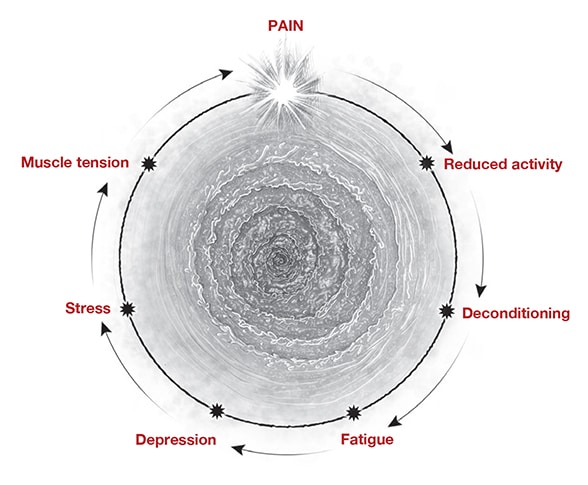Nov. 25, 2015
Chronic fatigue is common and often multifactorial in adolescents. In some patients, fatigue is due to a concurrent medical condition, inadequate sleep habits or coexisting psychological challenges. Occasionally, however, the fatigue persists in the absence of identifiable medical conditions.
Many teens who experience chronic fatigue have additional symptoms, including tachycardia, dizziness, headaches, nausea and abdominal pain, that suggest the presence of some form of autonomic dysfunction. Postural orthostatic tachycardia syndrome (POTS) is one type of autonomic dysfunction. Specific definitions vary, but generally include chronic fatigue and two key components:
- Symptoms of orthostatic intolerance
- Excessive postural tachycardia (more than 40 beats a minute) with supine to upright positioning on a tilt table
In addition to these signs and symptoms, adolescents with POTS often also experience depression and anxiety.
According to Sherilyn W. Driscoll, M.D., a pediatric physiatrist at Mayo Clinic Children's Center in Minnesota, the social and economic consequences related to POTS are significant. "Adolescent patients diagnosed with POTS may experience decreased school attendance, withdrawal from extracurricular activities, decreased academic performance and truancy," notes Dr. Driscoll. "And, as patients have multiple consultations while seeking a diagnosis and treatment, this condition can also have a significant financial impact on families."
While research continues to explore the pathophysiology of this condition, it's important to note that effective treatment is available for these patients. Dr. Driscoll advises that once the medical evaluation is complete, providers should encourage patients and their families to move beyond the search for medical diagnoses and focus on recovery. "Education and motivating patients to incorporate new healthy-living practices into their lives can help remediate POTS symptoms and reduce the negative impact of POTS and chronic fatigue in adolescents," says Dr. Driscoll.
In a recent article published in Current Problems in Pediatric and Adolescent Health Care, Dr. Driscoll and colleagues provide an overview about POTS and chronic fatigue, reviewing the relevant medical and psychological literature, and drawing upon the authors' practice experiences. Below are a few highlights from this review article, focusing on recovery strategies.
Patient and family education
As they struggle to find help for a condition that is not yet well-understood, many patients with POTS and their parents experience feelings of isolation and lack of social support. Education focusing on self-management and fostering social support is helpful. Individual and group education sessions that involve both patients and their families can encourage social interaction and lessen the feelings of isolation. Sessions should encourage a systematic approach to comprehensive lifestyle changes required for managing this condition.
Multidisciplinary care
Patients with POTS can experience a wide range of symptoms that no single medication or treatment can relieve. Treatment plans at Mayo Clinic typically use multidisciplinary care teams that may include specialists in general pediatrics, neurology, physical medicine and rehabilitation, sleep medicine, pulmonology, cardiology, infectious disease, psychology, psychiatry, and others as needed.
Nonpharmacologic strategies
Improvement in sleep hygiene, aerobic exercise and strength training, and cognitive behavioral therapy for pain and symptom management can be effective recovery tools. To improve the effective circulatory volume and enhance venous return, patients are advised to avoid sudden changes in posture, prolonged recumbency, high temperatures, large meals, and vasodilating or sympathomimetic drugs. Increased intake of fluids (preferably caffeine-free) and salt is usually helpful.
Numerous studies have demonstrated the benefits of including exercise and activity in the treatment plan. Exercise increases the effective circulatory volume and improves stroke volume and conditioning. Although there are currently no widely accepted specific exercise recommendations for patients with POTS, Dr. Driscoll says that patients should start with a duration and intensity that they can manage comfortably. They should gradually work toward performing at least one hour of age-appropriate aerobic exercise daily and strength training three times a week.
Patients with severe fatigue may benefit from starting with recumbent strengthening, cycling, rowing or swimming, with a gradual transition to activities in an upright posture.
Medication management
When nonpharmacologic therapies fail to provide adequate relief from headache, circulatory problems and gastrointestinal symptoms, patients may benefit from incorporating some medication in their therapeutic regimen. These can include:
- Fludrocortisone for fluid and salt retention
- Beta blockers and vasoconstrictors to reduce blood pooling and increase venous return
- Selective serotonin reuptake inhibitors (SSRIs) to address intestinal flow and blood flow
Currently, data supporting the use of medications to treat "brain fog," nausea and abdominal pain associated with POTS are scarce.
Biobehavioral and pain management strategies
POTS-associated pain and fatigue symptoms

POTS-associated pain and fatigue symptoms
Some patients experience pain and fatigue symptoms that significantly limit their ability to function and participate in school or social activities.
Some patients experience pain and fatigue symptoms that significantly limit their ability to function and participate in school or social activities. When these patients don't get relief from typical medical or nonpharmacologic strategies, they may benefit from a comprehensive rehabilitation program.
Mayo Clinic's Pediatric Pain Rehabilitation Center offers a 15-day program that includes a group pediatric outpatient interdisciplinary chronic pain rehabilitation program. This program helps participants focus their efforts on increasing function, tapering off of pain medications, and using cognitive behavioral therapy to build pain management and coping skills.
The program's multidisciplinary team also emphasizes stress management, treatment of depression and anxiety, and sleep hygiene. Family members are taught:
- To reduce attention to pain
- To reduce secondary gain related to pain
- To promote independent use of positive coping skills
In summary, adolescents with POTS can progress toward recovery with multidisciplinary care that includes patient and family education and a daily treatment plan including fluid and salt intake, aerobic exercise, improved sleep hygiene, and psychological support.
For more information
Kizilbash SJ, et al. Adolescent fatigue, POTS, and recovery: A guide for clinicians. Current Problems in Pediatric and Adolescent Health Care. 2014;44:108.